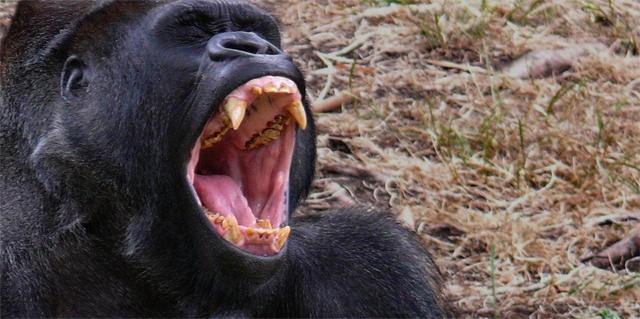The Weird Myth of the “Alpha” Male

The animal kingdom holds us in a permanent state of fascination. So certain are we that by observing it we will learn the secrets of ourselves that entire industries have risen around science as intermediaries, translators who make animal behaviors applicable to the human experience. The most popular of these intermediaries, of course, are those who promise that their translations of animal behavior will provide the key to sexual bounty and social standing to any human with time, inclination, and a credit card.
The most well-known concept put forth by such intermediaries is that of the “alpha.” The term is borrowed from biology, where it denotes the highest rank in a hierarchy of social animals. Though in some species females can be the highest ranking member, when used among humans the term usually refers to males, and has in recent years become closely linked to notions of masculinity. The site Traits of an Alpha Male, for instance, describes “becoming an alpha male” as “one of the highest achievements a man can ever have.”
To read some of the related sites is not altogether unlike falling into an Edith Wharton novel, with all its concerns about social standing and reputation — if one could imagine such a thing without also conjuring a code of conduct, operas and balls, fashionable addresses, and — of course — the requisite pedigree. In our modern rendering of the “alpha,” the promise of access to abundant territories, resources and protection for mating females is largely nonexistent — as is any notion of parental care investment. In this sense, the social aspects of “alpha” become conflated with those of dominance among species where females require only one thing from the male: his DNA.
Alpha status, as it is being sold, is a charade in which one participates in the hopes of achieving respect within one’s social sphere, including, of course, that of its female members, which — at least according to the intermediaries — either find alpha males irresistible, or at the very least are wired to make themselves sexually available to them at a moment’s notice.
This philosophy must, by necessity, ignore the variation in mating practices among social animals. A study showing that the alpha male silverback gorilla doesn’t get significantly more sexual opportunities than, say, beta and gamma males, for instance, would not be a frequently cited example. Neither would this delightful piece at io9 by Esther Inglis-Arkell about “sneaker” males — non-alphas who craftily devise ways to use the strengths of their species’ dominant males to benefit their own mating strategies.
As Inglis-Arkell writes, the male octopus fiercely guards his female, fighting off all incoming males who would monopolize her attention, but because he allows other females easy entry (in order to mate with them as well), some males change their color and hide their mating arms to slip past. Thus, these crafty males are able to mate with her, while the male octopus fights off possible interlopers.
Because the word “alpha” so often conjures images of dominance and aggression, the door is open to these and other examples, like that of the Japanese quail. Dominant males of this species are incredibly aggressive with females they’re courting, female Japanese quails show a strong preference for subordinate males. In her book The Nature of Human Nature, Carin Bondar describes an experiment designed to understand Japanese quail mate selection: “researchers had a female witness a fight between two males. Once the fight was over and a clearly defined winner and loser had been determined, the female was allowed into the fight arena to select her partner.” The females overwhelmingly chose the loser of the fight.
“The loser males may not have access to the resources that the winners do, but they are not as aggressive toward their female partners,” Bondar writes. “The females prefer to mate with less aggressive males in order to protect themselves from courtship abuse by dominant males.”
Choosing the dominant male doesn’t necessarily mean better odds for one’s offspring, either. Among the Pacific blue-eye, a type of fish, subdominant males spend more time on courtship rituals than their dominant counterparts, and females have greater egg-hatching success when they choose the former over the latter.
“What’s important to remember is males aren’t the only ones who benefit, genetically speaking, by mating with as many different partners as possible,” concludes Inglis-Arkell, noting “females have as much reason to hedge their bets as males do.”
And so they do, though as with the silverback, such aspects of animal behavior are not popularized by the intermediaries promising the holy grail of sexual success. The animal world and the reproductive habits within it are worthy of our fascination, but we must question these overly simplified interpretations so often crafted to appeal to established gender roles and status signifiers in order to see them, truly and fully, as they are.
Header image by James Gaither (Flickr, CC BY-NC-ND 2.0).







Pingback: Duck morality is not for me()
Pingback: Morsels For The Mind – 23/01/2015 › Six Incredible Things Before Breakfast()
Pingback: I’ve Got Your Missing Links Right Here (24 January 2015) – Phenomena: Not Exactly Rocket Science()
Pingback: I’ve Got Your Missing Links Right Here (24 January 2015) | Gaia Gazette()